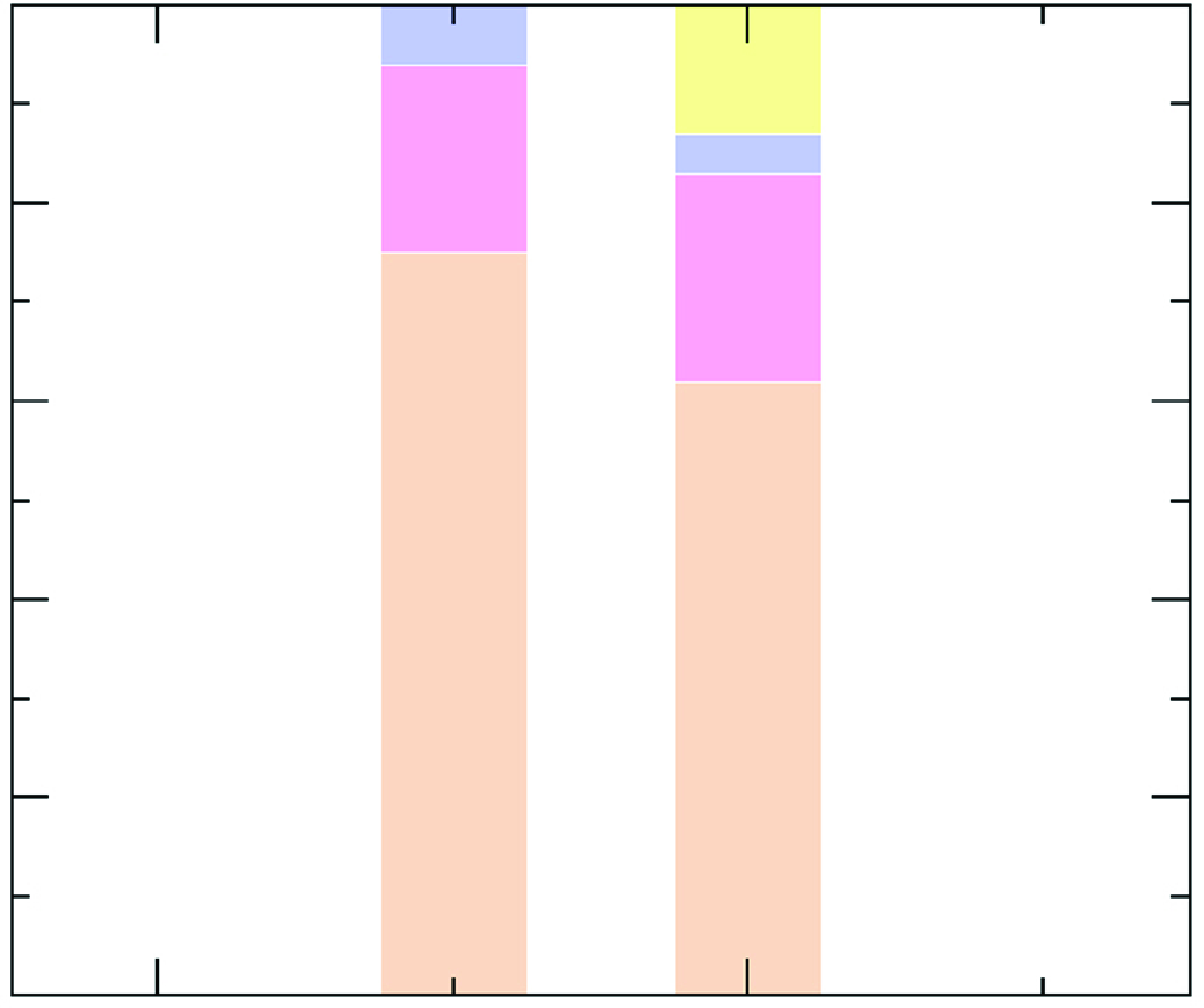No CrossRef data available.
Article contents
Scale-dependent contributions from turbulent motions to the wall-shear stress in rough-wall open channel flows
Published online by Cambridge University Press: 23 June 2025
Abstract

Long-duration and time-resolved particle image velocimetry measurements were conducted in rough-wall open channel flows (OCFs), with the friction Reynolds number ranging from 642 to 2034. The primary objective is to investigate the impacts of various turbulent motions at different scales on the mean wall-shear stress ( $\langle \tau _w \rangle$). To achieve this aim, a physical decomposition of
$\langle \tau _w \rangle$). To achieve this aim, a physical decomposition of  $\langle \tau _w \rangle$ was initially performed utilizing the double-averaged methodology proposed by Nikora et al. (2019 J. Fluid Mech. 872, 626–664). This method enabled the breakdown of
$\langle \tau _w \rangle$ was initially performed utilizing the double-averaged methodology proposed by Nikora et al. (2019 J. Fluid Mech. 872, 626–664). This method enabled the breakdown of  $\langle \tau _w \rangle$ into three distinct constituents: viscous, turbulent and dispersive stress segments. The findings underscore the substantial roles that turbulent and dispersive stresses play, accounting for over 75 % and 9 % of
$\langle \tau _w \rangle$ into three distinct constituents: viscous, turbulent and dispersive stress segments. The findings underscore the substantial roles that turbulent and dispersive stresses play, accounting for over 75 % and 9 % of  $\langle \tau _w \rangle$, respectively. Subsequently, a scale decomposition was further applied to analyse the contributions of coherent motions at different scales to
$\langle \tau _w \rangle$, respectively. Subsequently, a scale decomposition was further applied to analyse the contributions of coherent motions at different scales to  $\langle \tau _w \rangle$. Adopting typical cutoff streamwise wavelengths (
$\langle \tau _w \rangle$. Adopting typical cutoff streamwise wavelengths ( $\lambda _x = 3h$ and
$\lambda _x = 3h$ and  $10h$), the contribution of large-scale motions (LSMs) and very large-scale motions (VLSMs) to the overall wall-shear stress was quantified. It was revealed that turbulent motions with
$10h$), the contribution of large-scale motions (LSMs) and very large-scale motions (VLSMs) to the overall wall-shear stress was quantified. It was revealed that turbulent motions with  $\lambda _x \gt 3h$ and
$\lambda _x \gt 3h$ and  $\lambda _x \gt 10h$ contribute more than 40 % and 18 % of
$\lambda _x \gt 10h$ contribute more than 40 % and 18 % of  $\langle \tau _w \rangle$, respectively. The scale decomposition of the wall-shear stress and the contribution from LSMs and VLSMs exhibit evident dependencies on the Reynolds number. The contribution of LSMs and VLSMs to
$\langle \tau _w \rangle$, respectively. The scale decomposition of the wall-shear stress and the contribution from LSMs and VLSMs exhibit evident dependencies on the Reynolds number. The contribution of LSMs and VLSMs to  $\langle \tau _w \rangle$ is lower in rough OCFs compared with those of smooth counterparts. Secondary currents induced by the rough wall are hypothesised to be responsible for the reduced strength of LSMs and VLSMs and decreases in their contribution to
$\langle \tau _w \rangle$ is lower in rough OCFs compared with those of smooth counterparts. Secondary currents induced by the rough wall are hypothesised to be responsible for the reduced strength of LSMs and VLSMs and decreases in their contribution to  $\langle \tau _w \rangle$.
$\langle \tau _w \rangle$.
Information
- Type
- JFM Papers
- Information
- Copyright
- © The Author(s), 2025. Published by Cambridge University Press


